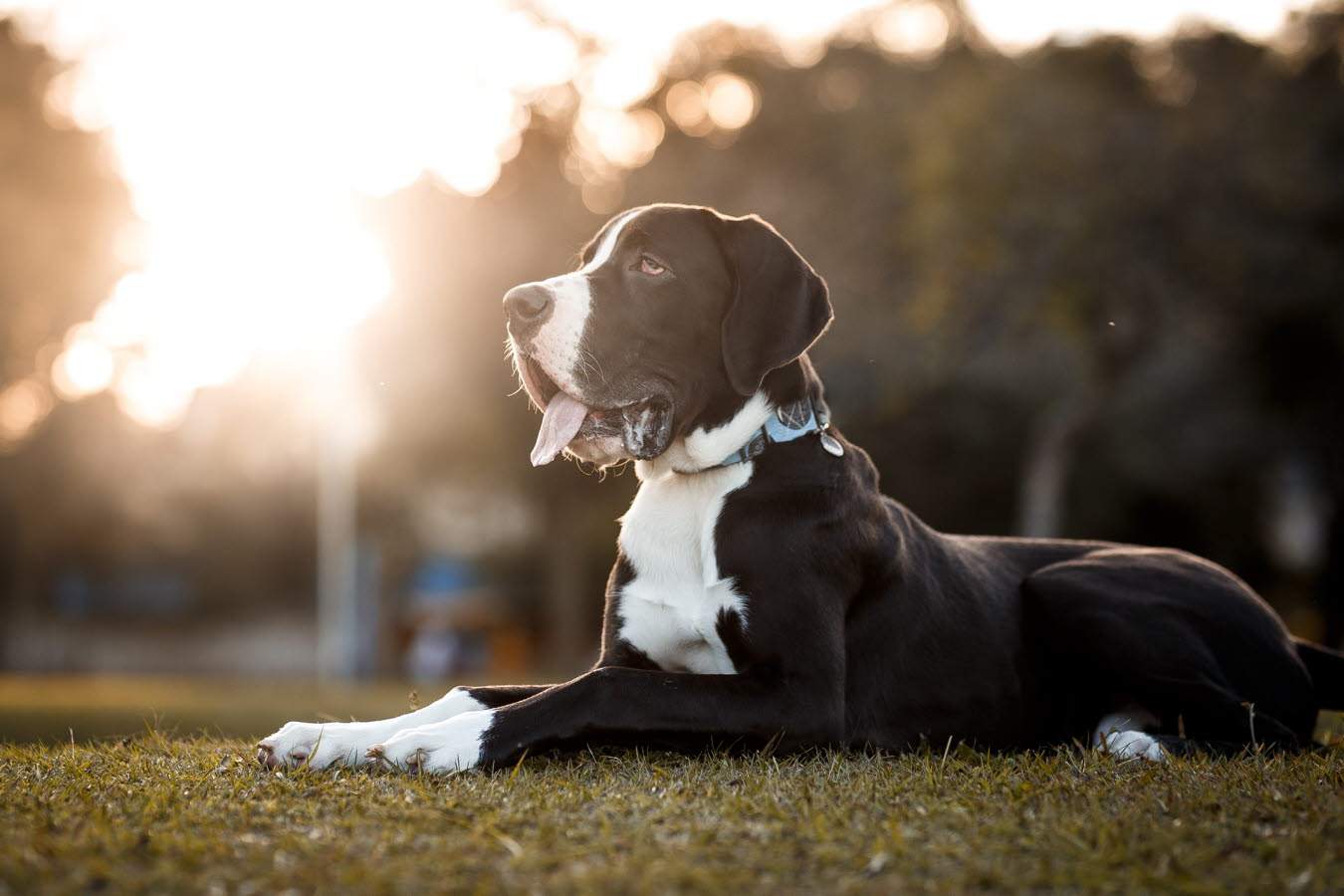What is disc disease?

Intervertebral disc disease (IVDD) is the most common spinal problem seen in dogs. The condition is painful and can cause life-altering paralysis, so careful veterinary management is crucial. IVDD is seen less frequently in cats but is also a possible cause of spinal pain and should be a differential diagnosis in these cases.
What are spinal discs?
The intervertebral discs act as shock absorbers for the spine. They consist of a gelatinous substance surrounded by a thick outer layer, allowing them to cushion the vertebrae and provide flexibility to the spine.
There are two major types of IVDD
- Type I: is characterised by disc herniation of the inner material of the disc. Patients typically present with a sudden onset of symptoms and this type of herniation can occur in dogs (and sometimes cats) of any age. Type I IVDD is seen most commonly in short-legged breeds such as the Dachshund, Basset hound and Corgi but can also occur in larger breeds of dog, such as Dobermans.
- Type II: the discs become hardened over a long period and eventually break down, bulge out, and compress the spinal cord. Clinical symptoms are less severe and tend to appear more slowly. Type II IVDD is more common in older and large breed dogs.
Signs of disc disease
- Abnormal walking and a reluctance to move or jump
- Pain (shivering and shaking) and weakness in hind legs (lameness)
- Crying out in pain, a hunched back or neck with tense muscles
- Reduced appetite and activity level
- Loss of bladder and bowel control or unwillingness to stand or squat to toilet
You should seek urgent veterinary attention if you notice any of the above symptoms.
Diagnosis of disc disease
If your pet is suspected to be suffering from IVDD, your veterinarian will need to perform a thorough examination and neurological exam to identify where in the spinal cord the disc injury is located.
Your veterinarian may recommend radiographs to provide an initial assessment of the spine and also to rule out other causes of pain such as arthritis or a bone tumour. Your pet will need to be sedated or anaesthetised for these X-rays.
In the majority of cases, further and more detailed imaging such as a myelogram, MRI or CT will be necessary to locate the exact location and severity of the disc herniation. If your pet needs spinal surgery, your vet will refer your pet to a specialist orthopedic surgeon. Surgery for disc disease is a complicated procedure that is performed by a registered veterinary specialist surgeon.
Treatment of disc disease
Options for treatment of disc disease depend on the type of disc herniation, the severity of symptoms, as well as breed and age of the pet. Some pets can be managed conservatively with pain relief and strict rest, but your pet will need to be closely monitored by your veterinarian. Other patients with neurological signs will need surgery to have disc material removed and prevent deteriation and poor quality of life.
Prevention of disc disease
Tips for preventing IVVD include:
- Keep pets in an ideal weight range to help reduce their risk
- In dogs predisposed to the condition, jumping should be limited
- Use steps of ramps to help allow pets to get on and off furniture more safely
- Walk your dog on a harness (instead of a collar) if they are predisposed to IVDD
If your pet is showing any of the symptoms of IVDD, you should seek veterinary attention urgently. The earlier IVDD is diagnosed, the better the prognosis.
